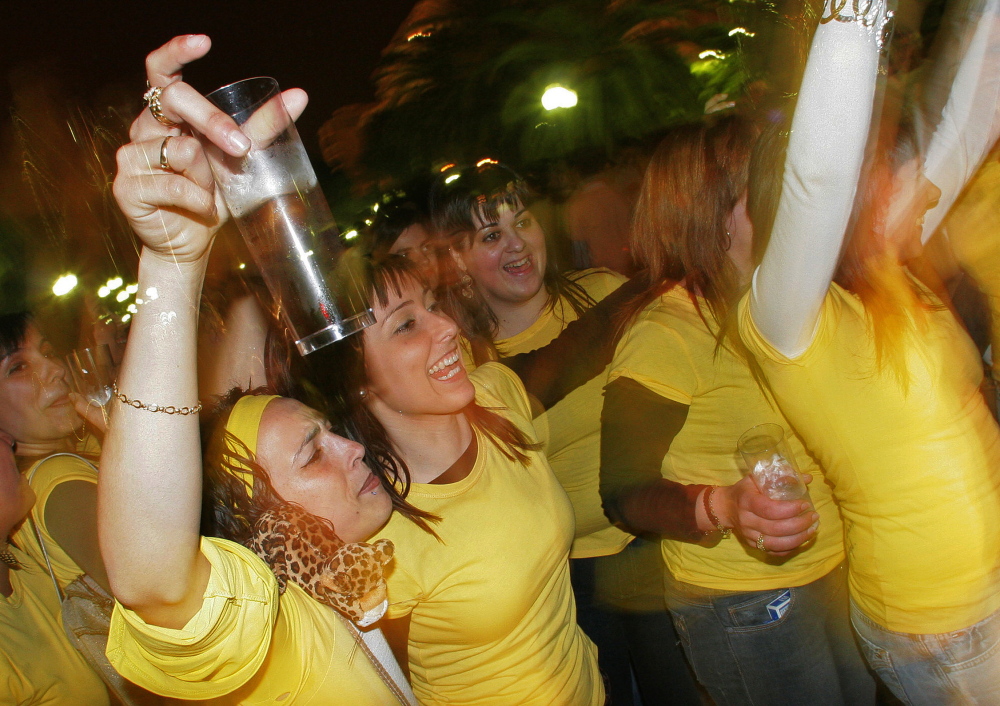Does consuming 100 bottles of wine a year sound like a lot?
It turns out that this is actually the average alcohol consumption per person in many wealthy countries, according to a recent report. With the equivalent of a little more than 85 wine bottles per year, Americans consumed less than citizens of many other surveyed countries in 2012.
The Organization of Economic Co-operation and Development, or OECD, examined alcohol consumption patterns in its 34 member states and its conclusion is damning. “The cost to society and the economy of excessive alcohol consumption around the world is massive, especially in OECD countries,” the organization’s secretary-general, Angel Gurría, commented on the report, which especially emphasizes the increasingly risky behavior of women and younger citizens.
“Alcohol now accounts for a higher proportion of deaths worldwide than HIV, AIDS, violence and tuberculosis combined,” the report warned.
Increased drinking has become particularly worrisome in Israel, Iceland, Finland, Norway, Poland and Sweden, it says. Less dramatic – but nevertheless alarming – were consumption increases in Russia, Brazil, India and China. The study blamed the easier availability of alcohol in many countries, as well as its affordability and lax advertisement restrictions.
Despite increases in some countries, the average alcohol consumption in OECD member states has fallen by 2.5 percent between 1992 and 2012. It now stands at 2.4 gallons of pure alcohol per capita – which is above the U.S. average of 2.27 gallons. Citizens of Estonia, Austria, France, Ireland and the Czech Republic consume the most alcohol among OECD members.
Although global alcohol consumption has decreased, according to the authors of the report, “harmful drinking is on the rise among young people and women.”
Whereas in the 2000s, 30 percent of all boys 15 or younger and living in OECD member states had been drunk at least once, that number had risen to 43 percent by 2012. The researchers observed a similar trend among girls. The OECD did not specify how youth binge drinking had evolved in the U.S. in particular.
Surveys from other countries have shown that heavy drinking is not only a hazard to one’s personal health but also a burden on taxpayer money. A 2013 study by the British Association of Chief Police Officers estimated that binge drinking caused costs of $18 billion a year in the nation.
Other countries have recently taken measures to decrease heavy drinking among girls and boys. According to a new law passed this April, inciting binge drinking is now punishable with up to a year in jail or a hefty fine in France.
While regular alcohol consumption among French youth has historically been low despite lax regulations, binge drinking poses a new and previously little-known problem. Between 2010 and 2013, hospital admissions of young drinkers rose by an alarming 30 percent.
In its report, the OECD comes to the conclusion that European countries such as the Czech Republic or Germany could serve as role models in reducing rates of heavy drinking. Public health policies there have recently had a significant impact, according to the organization.
“Raising costs, for example through increased taxes, or imposing minimum prices on cheaper alcohol” are some of the proposals mentioned in the report, among a greater regulation of alcohol advertising, for instance.
Apart from health benefits, a drop in youth binge drinking could also have another positive impact, according to research by Cardiff University: a decrease in violent crime.
Copy the Story LinkSend questions/comments to the editors.




Success. Please wait for the page to reload. If the page does not reload within 5 seconds, please refresh the page.
Enter your email and password to access comments.
Hi, to comment on stories you must . This profile is in addition to your subscription and website login.
Already have a commenting profile? .
Invalid username/password.
Please check your email to confirm and complete your registration.
Only subscribers are eligible to post comments. Please subscribe or login first for digital access. Here’s why.
Use the form below to reset your password. When you've submitted your account email, we will send an email with a reset code.